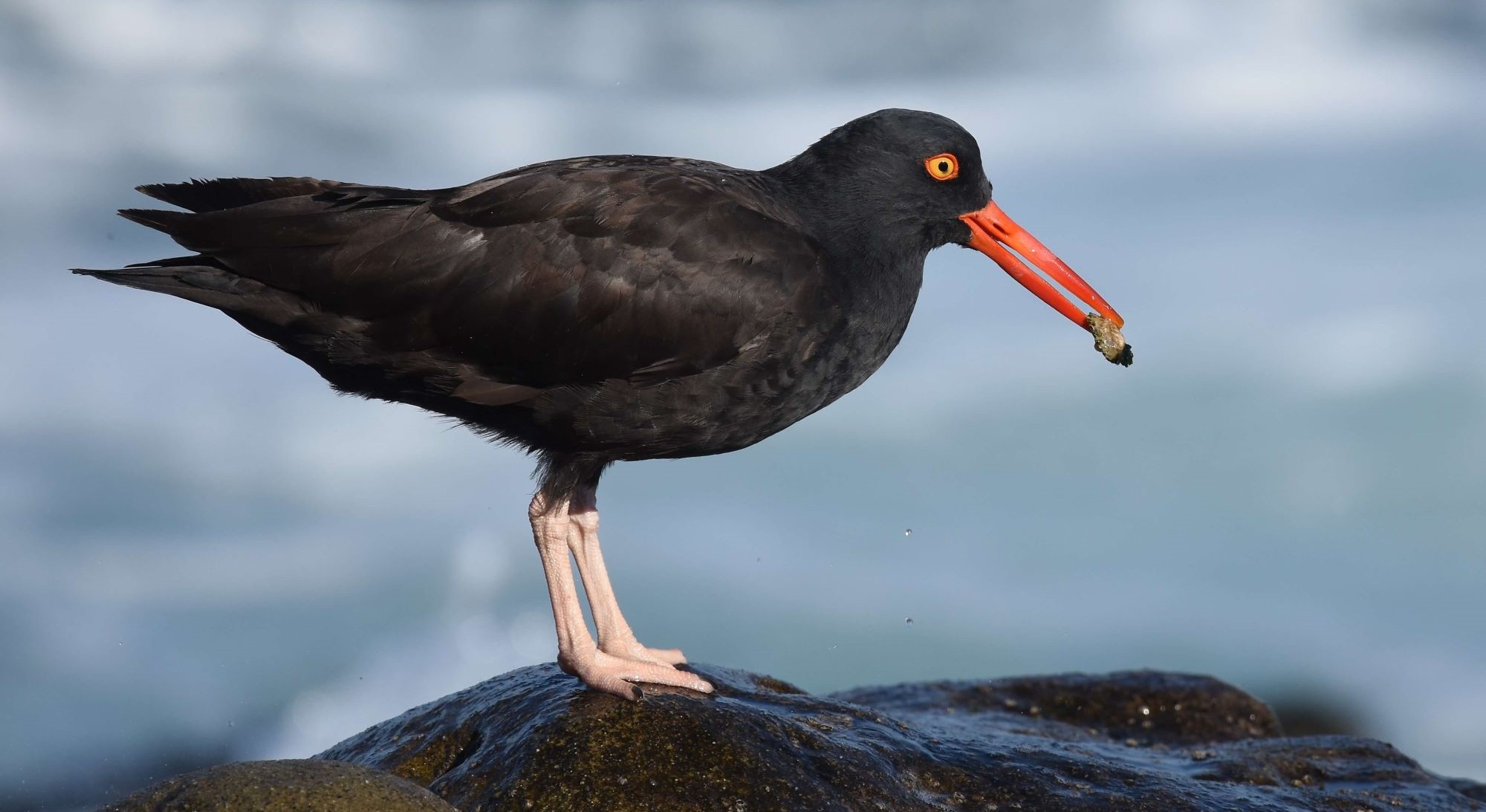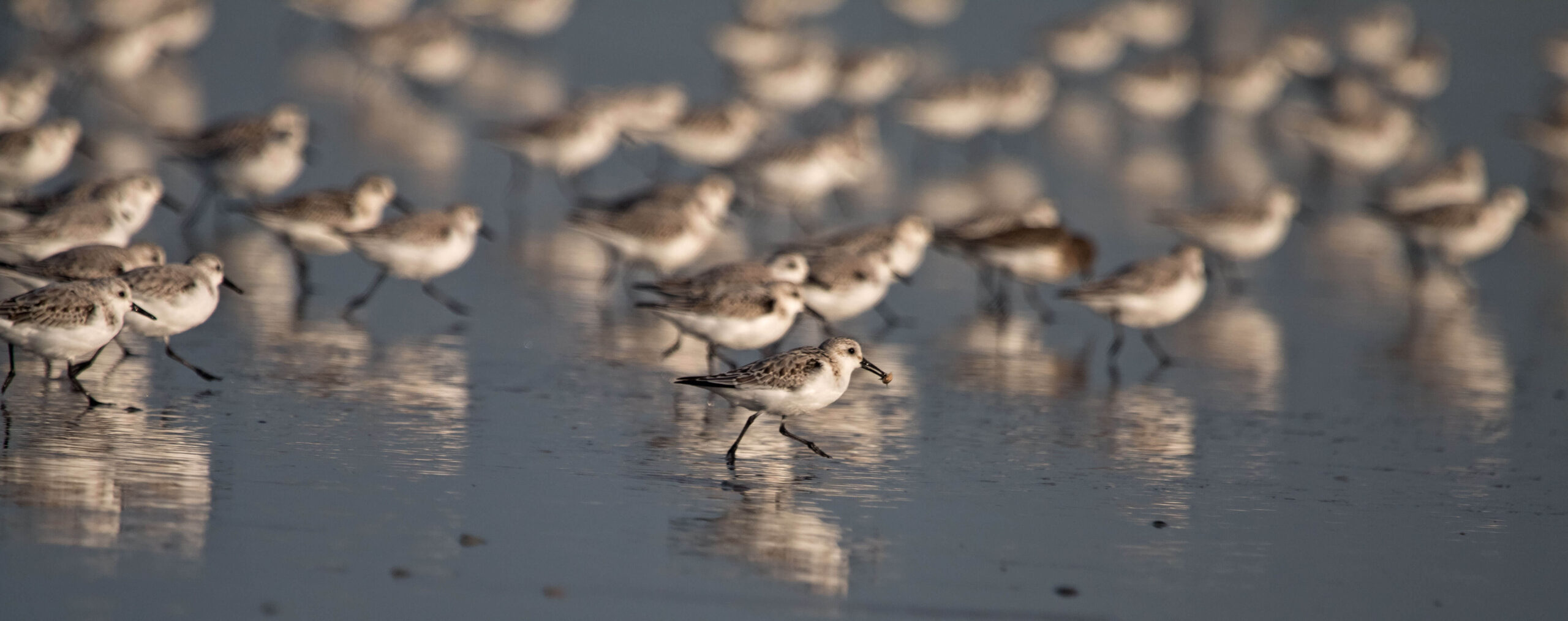
How are birds adapting to climate change?
That’s a critical question on the minds of many scientists. For decades, scientists have been studying the impacts of climate change on plants and animals. Data from a variety of sources show many bird species ranges globally are shifting poleward, higher in elevation, and that many migratory species are arriving at breeding grounds earlier in the spring. Additional data shows changes in body size and wing length, with many birds getting smaller, and their wings longer. This may have significant consequences for species, impacting population growth, reproductive success, and overall ecosystem function.
Outside of these direct impacts, climate change driven increases in fire and drought frequency, new diseases, introduced and invasive species, and mismatches between resources and migration patterns can drastically impact birds. While this can be disheartening to hear, scientists are working quickly and efficiently to better understand and address the issues – helping both birds and people. Ultimately, this is what led researchers to come together and investigate how coastal waterbird communities along the B.C. coast are impacted by climate change, and how this impacts conservation approaches.

New research collaborations
Alongside partners at Birds Canada, Mount Allison University, and Environment and Climate Change Canada, Pacific Birds set out to investigate how coastal waterbird communities that overwinter in B.C. are responding to climate change; specifically, changes in habit use over time. Using a 20-year citizen science dataset, collected as part of a citizen science program led by Birds Canada, the British Columbia Coastal Waterbird Survey (BCCWS), the team modeled occupancy trends along the Pacific coast of Canada. The goals of the research included understanding regional declines and shifts in habitat use among common waterbird species, within the context of protected areas and the effectiveness of current conservation approaches.
The study investigated changes in coastal waterbird presence in protected vs unprotected habitats, before and after being designated as a protected area. Using models to estimate occupancy, the researchers found that around 36% of species in the study responded positively to protected area designation in the past 20 years. Specifically, colonization rates were higher and extinction rates lower within more recent protected area boundaries. In contrast, protected areas established pre-1999, and often with less focus on waterbird conservation, have experienced some of the greatest declines, even more so than many unprotected regions.

The importance of protected areas
The researchers also investigated how occupancy trends changed across waterbird groups. Species higher up in the food chain, such as those that consume shellfish and fish as their primary prey, exhibited more substantial declines across the study area than other groups of waterbirds. Cold-tolerant and migratory species also showed higher declines in occupancy than warm-tolerant and resident species. Overall, cold-tolerant, migratory species, and those at the top of the food chain showed range shifts farther north and into cold-water fjords along the North-Central coast of B.C., suggesting southern areas are becoming less suitable for cold-tolerant, fish and shellfish eating species. The study also found that herbivores and warm-tolerant species exhibited apparent range shifts into the Salish Sea, potentially indicating movement from south of the US-Canada border northward along the southern coast of B.C.
Together, these results indicate the importance of existing protected areas for wintering coastal waterbird populations, particularly more recently designated areas, specifically targeting waterbird communities. Despite this, older established protected areas are still important for waterbirds, as most of these are concentrated in the south where overwhelming occupancy declines are occurring. Instead, these habitats serve as stepping-stone habitats, helping stabilize populations from farther south as they move north and into Canadian coastal waters.

Research implications
Given the high human presence and level of disturbance in the Salish Sea, the researchers recommended expanded protections in the area and improved management of older protected areas. Keeping the Salish Sea protected and establishing new protections in the area allows it to serve as stepping-stone habitat for species moving northward. The researchers also recommended the designation of new protected areas along the North-Central B.C. coast and fjords, where the data indicated range shifts for many waterbirds.
The study region along the Pacific coast is part of the Pacific Flyway, a major north-south migration route that extends from Alaska to Patagonia. Research suggests that ensuring habitats at every point along the Flyway are protected is crucial for the health and survival of many species. While this work identified some worrisome trends in waterbird communities, it also identified spots of hope for the future. Specifically, these results mean that unprotected areas like the colder water fjords of the North-Central coast may provide much-needed habitat for migratory species and species higher on the food chain.
Protecting these habitats can help ensure waterbirds continue to thrive and aid their transition to new regions. Further, developing a large, uninterrupted network of protected areas along the Flyway would have benefits that span far beyond waterbirds. It would help maintain habitat connectivity as species shift northward and support population stability for fish, mammals, and more. Projects like this one help to highlight those significant areas that need protection, identify species at risk and ultimately inform long-term management decisions.
To learn more about the study, read the full article ‘Occupancy trends of overwintering coastal waterbird communities reveal guild-specific patterns of redistribution and shifting reliance on existing protected areas' in Global Change Biology.
